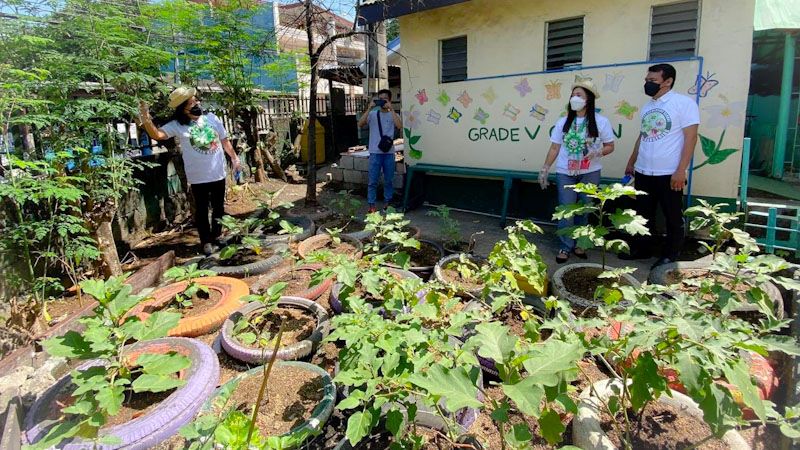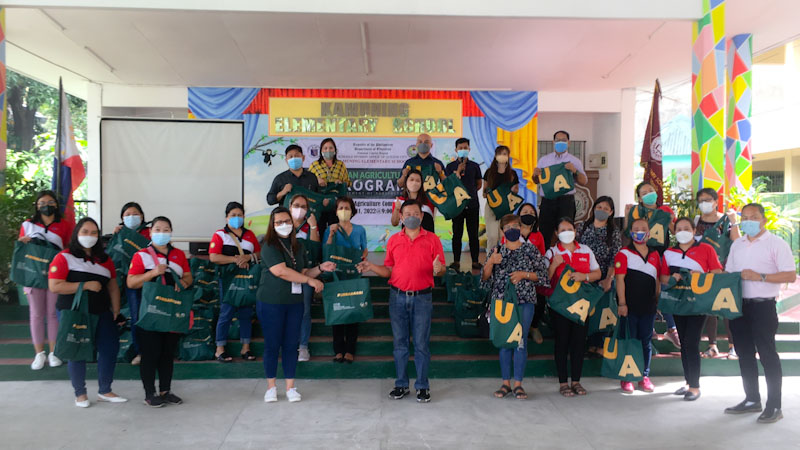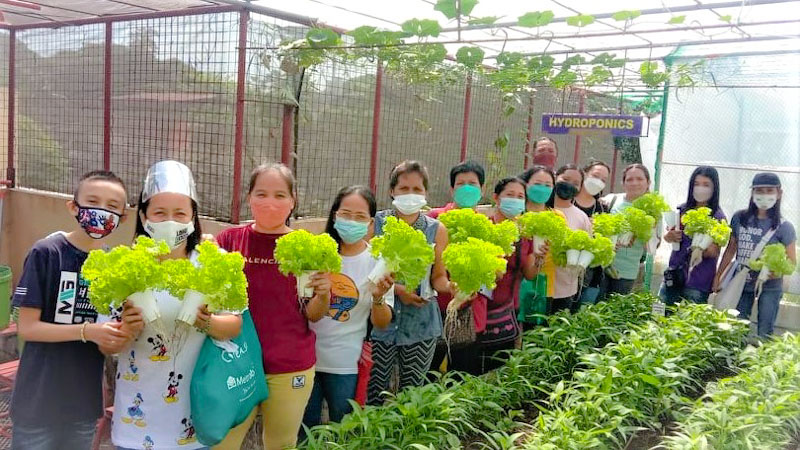DILIMAN, Quezon City—There is a emerging trend among some schools in the National Capital Region: school gardens are upscaling into needs-sensitive, pedagogic, cooperative, and productive institutions when it comes to urban and peri-urban agriculture.

For the first quarter of 2022 alone, the Agricultural Training Institute (ATI) successfully launched a total of 21 school-based urban agriculture gardens in Caloocan City and Quezon City. These comprised of primary and secondary schools. Stemming from the Gulayan sa Paaralan Program (GGP) that was established through the Department of Education (DepEd) Memorandum No. 293, series of 2007, and the School Inside a Garden (SIGA) launched upon the issuance of the Department of Education, Culture and Sports (DECS) Memo No. 77, series of 1995, to complement the hunger mitigation initiatives of the government and to encourage the schools to establish gardens for continuous vegetable supply for school-based and community feeding programs. These initiatives were linked into the ATI Urban Agriculture Program (UAP) to maximize their impacts, and expand their adeptness in agricultural technologies such as multiple cropping, container gardening, edible landscaping, hydroponics, vertical gardening, and aquaponics, among others.

In the case of the Schools Division Office (SDO) of Quezon City, the Education Program Supervisor (EPS) Roger S. Tamondong, Ph.D. helped lay the foundation of engaging and challenging several educational institutions to intensify the development of demonstration gardens in areas within the school premises. So as to elevate the pedagogy of the Edukasyon sa Pagpapahalaga, and the Technology and Livelihood Education courses, and leverage for added livelihood and agripreneurial benefits in these areas, especially in the midst of the COVID-19 pandemic. The success behind this expansion can be attributed to the proactive lobbying of the SDO to include as many schools as possible, especially those areas for gardening that exhibit agricultural practices worth emulating, even as early as 2011.
As Dr. Tamondong consistently reminds during the UAP-GPP launching activities, every school—from the heads to the teachers and non-teaching personnel—must be conscious in doing ecologically-responsive agriculture and live like a farmer who puts high value in every resource he or she has to keep the food accessible, sustainably produced, and constantly nourished.

As of March 31, there are 15 schools in this city that were inaugurated as 2022 urban agriculture garden sites. Namely: Old Balara Elementary School; Kamuning Elementary School; San Agustin Elementary School; Paltok Elementary School; Doña Juana Elementary School; San Francisco High School; Commonwealth High School; New Era High School; Tandang Sora Elementary School; Don Alejandro Roces Sr. Science-Technology High School; San Bartolome High School; Ernesto Rondon High School; Sta. Lucia High School; Quezon City High School; and Cubao Elementary School.
Meanwhile, in Caloocan City, the hands-on leadership of the SDO through the EPS Allan G. Salom paved the way for the launching of six more integrated school-community gardens. Specifically, in: Deparo Elementary School; Bagbaguin Elementary School; Deparo High School; Tala Elementary School; Caloocan North Elementary School; and Gregoria De Jesus Elementary School.
According to Mr. Salom, “The schools, as sites for the establishment of urban garden, will be on great heights because Agricultural Arts is one of the components of Technology and Livelihood Education. School gardens will be utilized as learning laboratories, and eventually, a source of knowledge and information, and application of skills in agricultural technology.”

“The school heads are grateful of the program for it is their advocacy to raise the level of public consciousness on the health, nutritional, and economic benefits of establishing school, household, and community gardens. Stakeholders are working together for the sustainability of the program, and the ATI provided worthwhile training to teachers [and] students,” Mr. Salom added.
Upon launching, the schools sealed their commitment as active partners and co-innovators of the program. For Mr. Celso Macalingay, a farming enthusiast, urban agriculture coordinator, and a teacher at the Old Balara Elementary School, their team is eager to ensure the long-term viability and continual expansion of school-based gardening in all aspects, while inculcating the spirit of bayanihan with various stakeholders in their school.

With the revamping of the UAP through creation of the Department of Agriculture’s National Urban and Peri-urban Agriculture Program (NUPAP), it is definite that the school gardens can further boost the promotion of the program and become living testaments of active citizenry and inclusive food security in areas they are in, together with other key players in the community.
Outside the school walls, the ATI continuously connects with the other sectors from the Local Government Units, barangays and homeowner community gardens, religious, and other sectoral associations and groups such as Persons with Disabilities, Persons Deprived With Liberty, and urban farming groups, among others.





